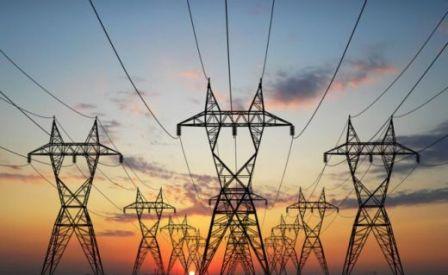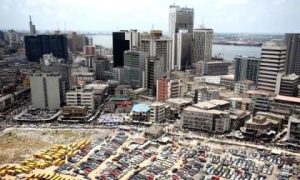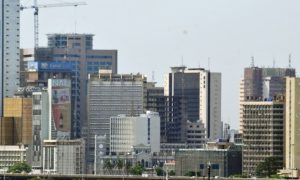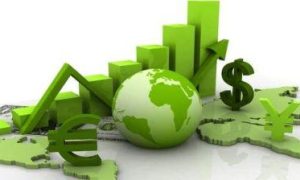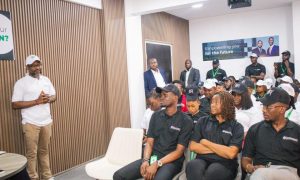Domestic Macroeceonomy: Electricity Tariff Hike
Our focus for this week is on the FG’s decision (through the Nigerian Electricity Regulatory Commission – NERC) to hike electricity tariff for customers. The NERC on Wednesday, April 3rd 2024 announced about 250.0% increase in electricity tariff (up to ₦225 per kWh consumed from ₦66 per kWh) for customers under the ‘Band A’ classification in the Nigerian Electricity Supply Industry (NESI). According to NERC, the ‘Band A’ customers account for 15.0% (1.8m) of the 12.0m household users who receive an average of 20hrs/day supply of electricity. The view of the NERC is that the tariff hike is expected to reduce FG’s subsidy in the electricity industry to the tune of ₦1.1tn (according to the Presidency) as well as to improve the quality of infrastructure needed to supply electricity.
In light of the tariff adjustment, we highlight some immediate potential gains for the economy from the policy action:
Fiscal Savings: The reduced subsidy burden (all else equal) should support a moderation in the fiscal deficit for 2024 (budgeted: ₦9.2tn), given that revenue sources are yet to significantly improved. More so, allocating the c.₦1.1tn that would be saved from the policy action to funding other pro-growth CAPEX would be expedient to the current administration’s ambition of growing the economy’s GDP to $1.0tn in four to six year from the current $535.3bn (World Bank, 2022). For context, the FG spent ₦4.9tn on electricity subsidies in the last 10 years, and the proposed subsidy for 2024, ₦1.6tn, is higher than budget provision for education (₦1.5tn) and Health (₦1.3tn). Buttressing this point, the IMF had alluded that the high cost of electricity subsidies could impact up to 3.0% of Nigeria’s 2024 GDP.
Private Investments in Power Sector: We opine that the shift to a more cost-reflective tariff would incentivise more private sector players to invest in the generation and distribution value chain of the power industry as well as boost FG’s prospect of attracting long-term bilateral and multilateral capital needed to strengthen transmission infrastructure which is solely controlled by the Transmission Company of Nigeria (TCN) on behalf of the FG. According to a Bloomberg report, GenCos and DisCos would need ₦2.0tn capital investments to revive the sector to enable steady power supply to end users. We have already seen the listing of some GenCos on the NGX in a move that would see more investors’ interest in the power sector. We believe listing of more power companies would help to unlock the much-needed capital required to upscale key infrastructure across the power value chain. Currently, Nigeria generates only 4,059 MW to feed 12.0m households out of an installed capacity of 13,097 MW.
Nevertheless, we flagged that the negative effect of tariff hike (if not cushioned with improved power supply) could overshadow the potential gains with far-reaching consequence on SMEs and Large Corporations (especially in the Manufacturing sector). Organisations are still feeling the effect of the high energy costs from the fuel subsidy removal policy which saw price of PMS rise from ₦189.00/litre to ₦650.00/litre. In a bid to keep up with margin (especially if power supply remains epileptic), we anticipate that businesses would pass on the increase energy cost burden to end users. Recall that the National Bureau of Statistics (NBS) had earlier reported that the headline inflation rate advanced for the fourteenth consecutive months to 31.7% in February from 29.9% the prior month. Hence, a near term inflection point for the high inflation scourge could be a mirage, should businesses not get improved power supply under the new tariff.
Looking ahead, we believe there are steps the FG needs to take to ensure the effect of tariff hike has a lasting positive impact:
End Frequent Collapse of National Grid: Collapse of the national grid has become a reoccurring experience for end users. This is due to the obsolete and overburdened status of the transmission infrastructure solely controlled by the FG. A recent report by the International Energy Agency (IEA) discloses that Nigeria’s power grid experienced 46 collapses between 2017 and 2023. The report also indicates that Nigerians rely on generators to meet 40.0% of their electricity needs. We are of the opinion that consumers would have little concerns paying more for electricity if they are guaranteed steady power supply. With the new hike in electricity tariff, the questions lie in how assured are the Discos towards providing at least 20hrs of electricity to Band A customers? Looking at the high cost of PMS (₦679.00/litre) and Diesel (₦1,257.00/litre), an improvement in steady power supply would be a welcome development despite the tariff hike. Hence, we recommend that the FG consider the option of unbundling the TCN (due largely to financial constraint) to attract large private sector capital to upscale the transmission infrastructure.
Improvement in Power Infrastructure: Nigeria has installed capacity of 13,097 MW, however available capacity sits at 4,059MW. An improvement in the grid infrastructure and better maintenance culture would bolster the available capacity which would see better supply to end users. Incentivising private investments in the power sector should bridge the gap and lead to increased supply of electricity to Nigerians.
Domestic Equities Market: Bourse Records Weekly Loss… ASI down 1.1% w/w
The domestic equities market closed the week on a bearish note as the NGX-ASI recorded a w/w loss of 1.1% to close at 103,437.67 points. Consequently, market capitalisation shed 1.1% to ₦58.5tn, while YTD return declined to 38.3% (previously 39.8%). Activity level improved as average volume and value traded surged 104.0% and 11.2% respectively to 119.9m units and ₦14.5bn. The top traded stocks by volume were ABBEYBDS (1.4bn units), ZENITH (352.4m units) and GTCO (227.2m units), while ZENITH (₦15.3bn), GTCO (₦11.6bn), and UBA (₦5.9bn) led in terms of value.
Across our coverage sectors, performance was bearish as four indices lost, one gained while the Oil & Gas index closed flat. Leading the laggards, the Banking and Insurance indices declined 6.7% and 0.9% w/w respectively, driven by sell pressure on FBNH (-14.2%), STERLING (-13.0%), LASACO (-6.1%), and CORNEST (-4.4%). Also, the AFR-ICT and Industrial Goods indices fell 0.8% and 0.3% w/w owing to price decline in MTNN (-2.2%), CWG (-10.0%), JBERGER (-11.4%), and WAPCO (-6.6%). Conversely, the Consumer Goods index rose 0.9% w/w due to buy interest in DANGSUGAR (+13.5%), MAYBAKER (+19.1%), and FTNCOCOA (+6.3%).
Investor sentiment, as determined by market breadth, declined to -0.1x (previously 0.1x) as 30 stocks gained, 41 lost and 79 closed flat. Top gainers for the week were CUTIX (+22.7%), MORISON (+20.5%), and MAYBAKER (+19.1%), while FBNH (-14.2%), STERLING (-13.0%), and JBERGER (-11.4%) led the losers. In the coming week, we anticipate an extended bearish run, as the market remains short of positive catalysts.
Afrinvest

